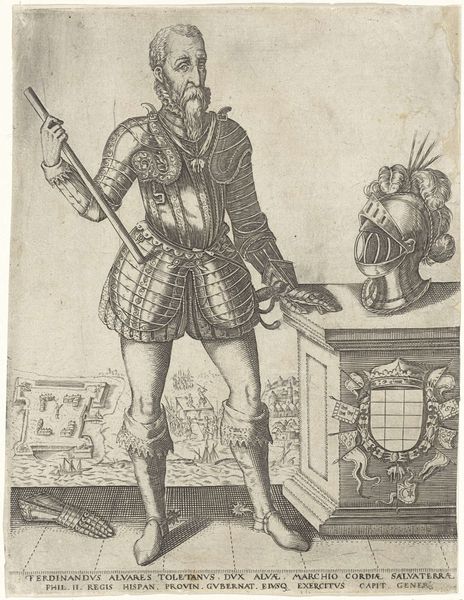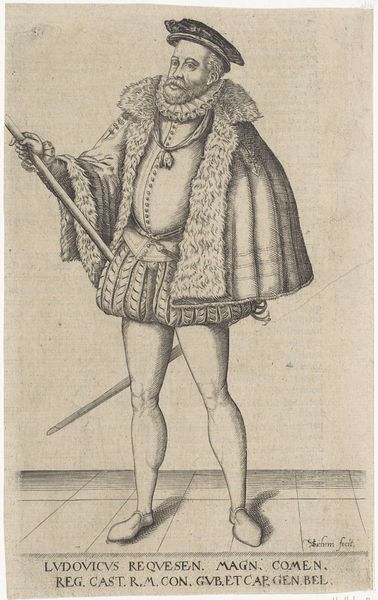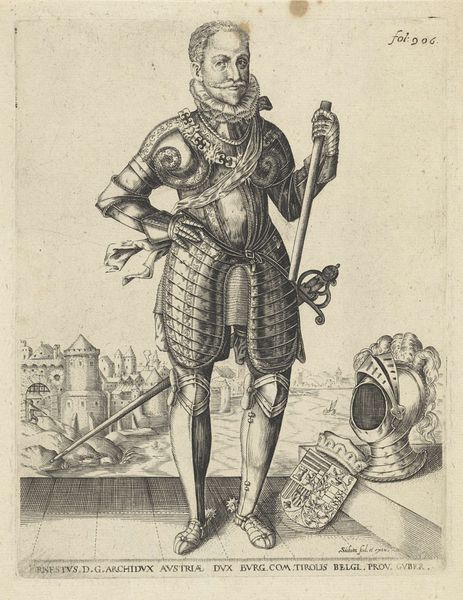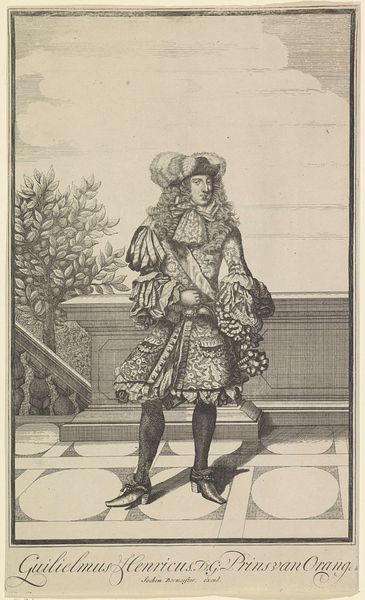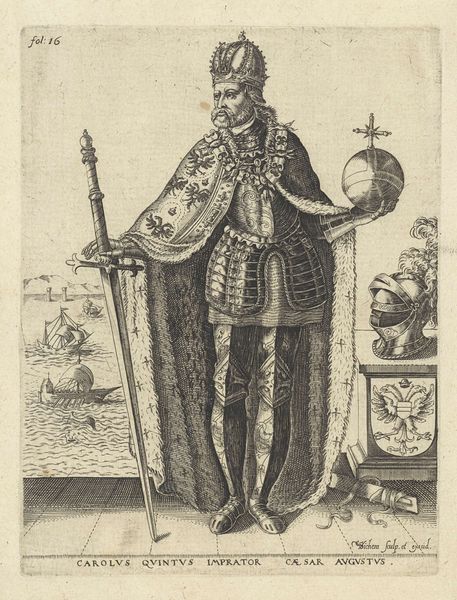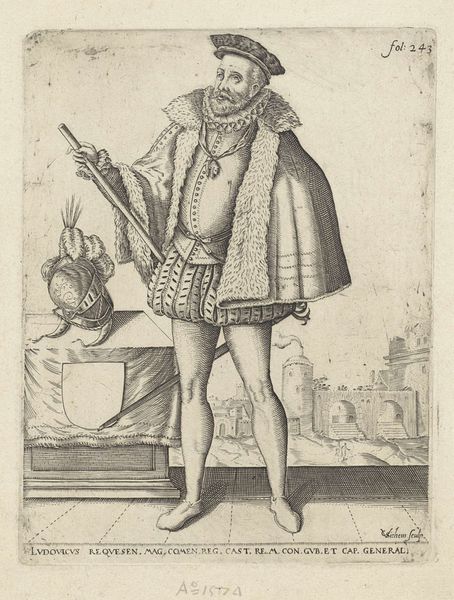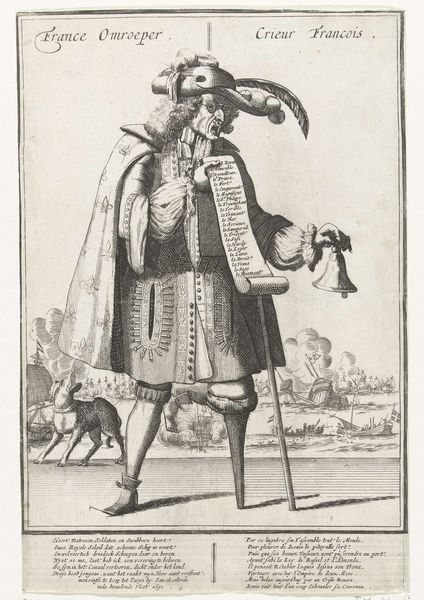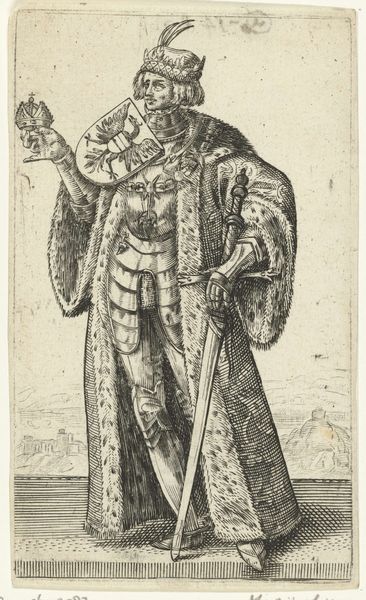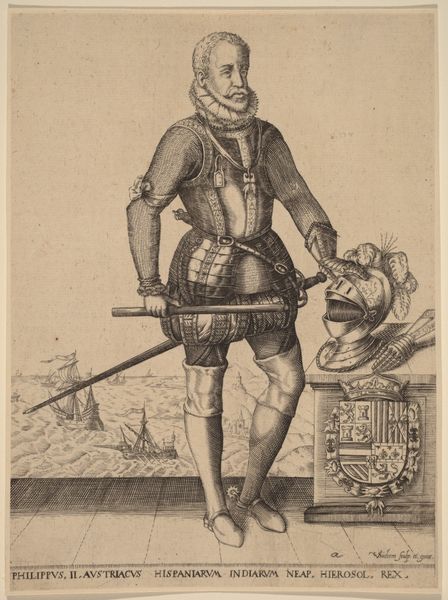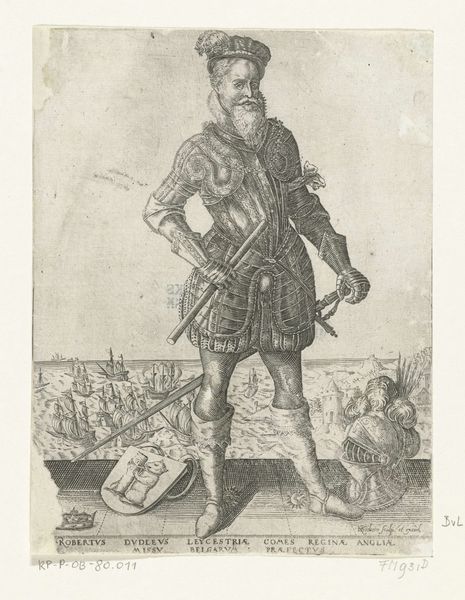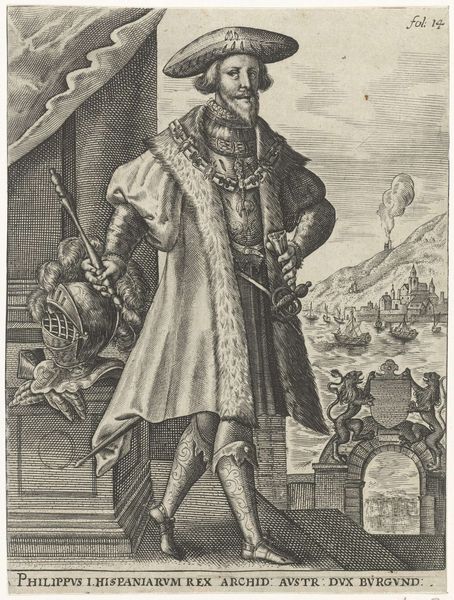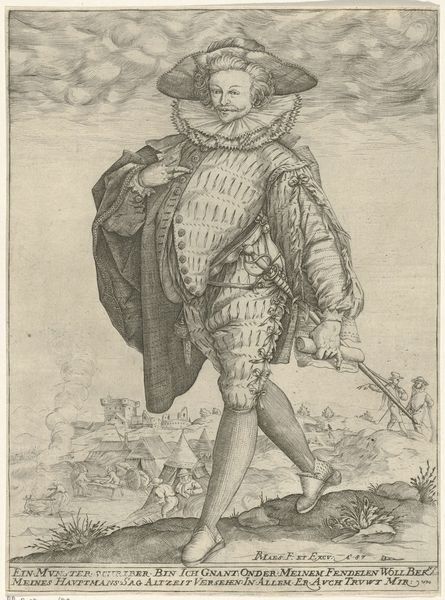
print, metal, engraving
#
portrait
#
baroque
#
dutch-golden-age
# print
#
metal
#
history-painting
#
engraving
Dimensions: height 186 mm, width 145 mm
Copyright: Rijks Museum: Open Domain
Curator: Alright, here we have Christoffel van Sichem I's 1626 engraving, "Portret van Alessandro Farnese, hertog van Parma." What strikes you immediately about this print? Editor: The elaborate armour, it's like he's wearing an exoskeleton made of lace. There’s such formality to his presentation that almost tips into the absurd, doesn’t it? The world shrunk down to a meticulously rendered shell. Curator: Yes, exactly! Sichem, working in that Dutch Golden Age Baroque style, was so meticulous in capturing texture, especially the armor and ruff. Farnese, a key historical figure as Governor of the Netherlands, is immortalized through this precise detail. Editor: He's powerful, for sure. But power isn't simply worn, it’s crafted. Notice the shield—it deflects literal and metaphorical assaults, reinforcing that rigid control demanded by aristocracy and, inevitably, projected through images like these. He stands above the people with the sky overhead and they can't access or reach what is around and within him. Curator: You’re right to highlight the implied layers. His family crest there, on the right, next to that peculiar helmet, is a potent symbol of his lineage and authority in that region, especially considering the context of Dutch revolt at the time. Editor: These power displays become part of a theater of dominance. The rigid pose, the calculated angle of his stance, even the spear leaning across his leg; these aren’t innocent flourishes. This controlled image normalizes asymmetrical power dynamics, suggesting he’s not just a man but a dynastic figure. Curator: It's all a performance of stability, amidst incredible tension, that’s exactly how Baroque prints worked! Sichem created the work many years after Alessandro’s passing and as an artwork commissioned and likely controlled by someone wishing to celebrate him. The details really give it life. Editor: Perhaps, but those details solidify existing paradigms of who wields control. I always feel it's key to approach even beautifully rendered historic portraits with an eye to the forces, ideologies, and power structures they tacitly support. What purpose this print served, really? Curator: Indeed. What once impressed can also be reframed as propaganda. So fascinating how even a relatively small engraving like this, from centuries ago, offers a world of viewpoints. Editor: Absolutely, making us ask: who truly holds the power, then and now, in shaping our perceptions through representation?
Comments
No comments
Be the first to comment and join the conversation on the ultimate creative platform.
